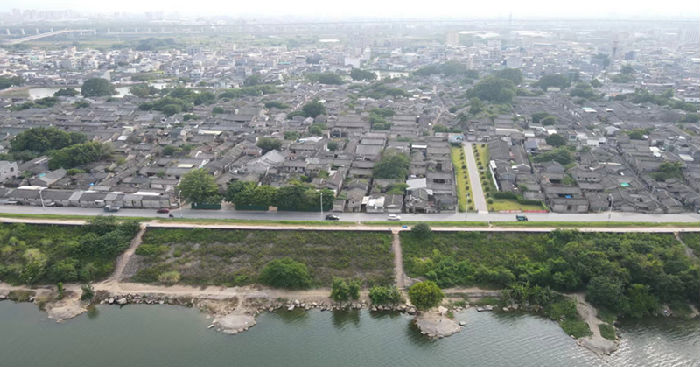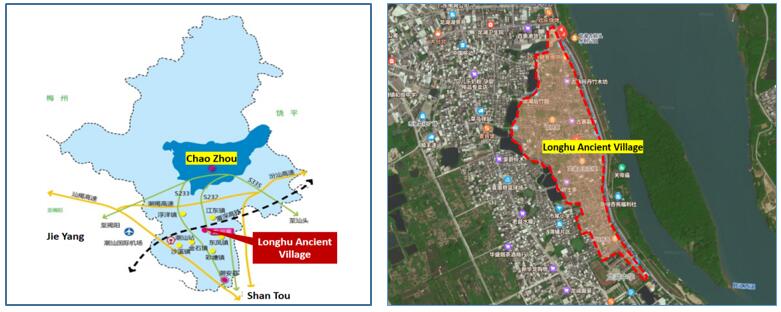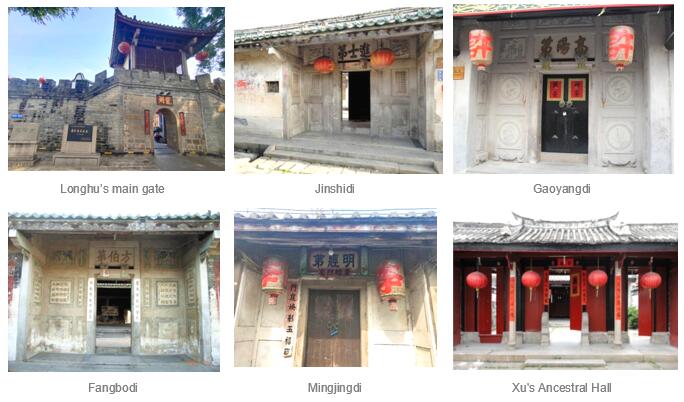



On August 2, 2022, our research group funded by the Humanities and Social Sciences Foundation of the Ministry of Education (18YJCZH008) came to Longhu Ancient Village in Chaoshan area of Guangdong Province to carry out a one-day investigation. This article mainly introduces its development history and architectural characteristics.
1.Overview of Longhu Ancient Village
Longhu ancient village is located in the middle and lower reaches of Hanjiang River. Located 16 kilometers north of Chaozhou and 26 kilometers south of Shantou, it covers an area of 1.5 square kilometers. It was founded in the Song Dynasty, gradually developed in the Ming Dynasty, and then achieved its flourishment in the Qing Dynasty. This village witnessed the historical changes of Chaoshan area from the agricultural era to the commercial era, and thus can serve as a representative example to understand Chaoshan commercial culture, architectural culture, farming culture, folk culture and other fields. Furthermore, it was selected as one of the ten most beautiful ancient villages in Guangdong in November 2012.

Location of Longhu Ancient Village
2.Ancient buildings of Longhu
The ancient buildings in Longhu ancient village still retain a small number of architectural components of the Song Dynasty, and a large number of Ming style buildings with simple style and elegant and beautiful Qing style buildings with exquisite carving. Among them, only about 8 ancestral halls are basically intact and rebuilt, and about 40 folk houses left more than three entrances. The ancient buildings of Longhu not only reflect the architectural styles of the Song, Yuan, Ming and Qing Dynasties, but also gather typical Chaoshan folk crafts such as wood carving, stone carving, porcelain inlay, color painting and shell ash sculpture.
The "three streets and six lanes" in the Longhu ancient village are densely covered with ancient ancestral halls, and the buildings are distributed in a belt shape. There are more than 100 clan ancestral halls, famous officials and rich gentry houses in the village, among which the more famous ones are Fangbodi (方伯第), Jinshidi(进士第), Gaoyangdi (高阳第), Xu's Ancestral Hall, Longhu Academy and Tianhou Palace. These ancient buildings are a collection of essence of Chaozhou folk crafts. The facade of the porch of each residence is heavily decorated, and the plaques, couplets and side walls are mostly painted with custom paintings. Stone carvings are used for door frames, column beams, column foundations, railings and steps, and stone drums, auspicious animals and lions are usually preferred. It can be called the "Fudi (府第) Culture Museum", which reflects the different architectural styles of the Song, Yuan, Ming and Qing Dynasties.

Aerial photograph of Longhu

Parts of main ancient buildings in Longhu

Lanes of Longhu
3. Longhu's uniqueness
Most of the rural settlements in Chaoshan are inhabited by ethnic groups, generally one or several townships. As a natural settlement, Longhu village has more than 50 surnames, more than 100 ancestral halls and family temples in the village, hundreds of dwellings and houses, and the length of the straight street is more than one kilometer (in the early years, the Taiping Road in Chaozhou City was only 1678 meters long)。 It is a rare mixed settlement in Chaozhou with many surnames and numerous sects. Its large scale is very rare in the natural settlements in Lingnan area. The settlement scale of longhuzhai has a unique personality in South of the Five Ridges.
Due to the nearly 1000-year history of the Song Dynasty, there still remained a small number of Song style architectural components with refined lines, a large number of Ming style buildings with simple style in Longhu village, the elegant and beautiful Qing style architecture, as well as the architecture with the decorative style from overseas. Longhu ancient village is a museum of Chaoshan residential buildings with ancient and modern, Chinese and western, and various patterns. In terms of architectural form, due to the influence of commercial economy and the restriction of specific geographical conditions, the houses and residences are less constrained by the official architectural form such as the construction method and the practice rules. In terms of plane layout, due to the restriction of geographical conditions, most of the houses and residences can not be developed horizontally, forming a multi-longitudinal-axis building group, which can only develop vertically along the central axis, which is very rare in Chaoshan residential buildings.
Edited by Chai Ning